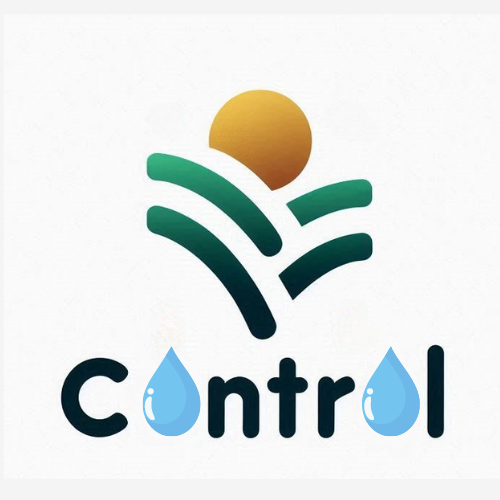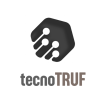
CONTROL Operational Group: Optimization and improvement of solar irrigation efficiency through the use of digital technology, applying artificial intelligence
- Type Operational group
- Status In progress
- Execution 2024 -2027
- Assigned Budget 585.646,87 €
- Scope Supraautonómico
- Autonomous community Castilla y León; Comunitat Valenciana; Galicia
- Main source of financing CAP 2023-2027
- Project website GO CONTROL
This project will positively contribute to improving the economic performance of the three main beneficiaries: farmers, developers of solar energy installations and developers of digital and AI technologies.
The aim is to facilitate the transfer and application of the knowledge needed to support science-based agriculture that can make crops profitable, increase the efficiency of its work and optimise natural resources; promote digital technologies and Artificial Intelligence to generate employment and attract young people and women, promote self-consumption of energy and advance the development of the rural world.
Irrigated crops in Spain represent 22% of the total cultivated area, a figure that has steadily increased since 2017. Drip and sprinkler irrigation systems have allowed producers to have more comprehensive control over the resources they consume, although they also entail high costs and a significant initial investment.
One of the greatest constraints in agriculture is knowing when to irrigate and how much. Technological innovation is the key to solving this problem, and the great revolution in ICT technologies, sensors, and automated processing capabilities has opened up new possibilities for optimizing water and energy. The compatibility of solar irrigation with digital technology would help curb this depopulation phenomenon in rural areas, contributing to improved economic performance and creating value in these areas. Women play a key role in rural areas, which can be further enhanced by activities that generate income-driven economies.
- 1. Definition of the water requirements of each crop and meteorological analysis.
- 1.1. Crops, plot characteristics, and definition of the water requirements of each.
- 1.2. Meteorological analysis: Obtaining historical data.
- 1.3. Study of the optimal sizing of water rafts.
- 2. Determining the parameters to be measured. Analysis of the necessary sensors (temperature, air temperature, soil temperature, photogrammetry, phenological state, solar energy availability, etc.).
- 2.1. Identification of all parameters to be measured.
- 2.2. Analysis of the most suitable sensors.
- 3. Study and analysis of strategies, algorithms and applications.
- 3.1. Process analysis and dataloggers.
- 3.2. Definition of the interrelationship control algorithms.
- 3.3. Development of the information visualization system for farmers.
- 4. Assessment of energy needs.
- 4.1. Study of the energy capacities of photovoltaic installations.
- 4.2. Analysis of the energy requirements of different irrigation systems.
- 4.3. Study of the capacity and quantity of energy storage.
- 5. Implementation of pilots, sensorization and application of algorithms.
- 5.1. Implementation of each of the pilots.
- 5.2. Sensorization.
- 5.3. Application of the algorithms.
- 6. Validation of pilots and replicability.
- 6.1. Validation of the pilots.
- 6.2. Aeronautical analysis and validation with drones.
- 6.2. Platform for replicability and transfer to other crops.
- 7. Analysis of the reduction of the water footprint and the carbon footprint.
- 7.1. Data analysis.
- 7.2. Real-time information on energy storage capacity.
- 7.3. Measuring the reduction of both the water footprint and the carbon footprint.
- 8. Dissemination.
Irrigated crops in Spain represent 22% of the total cultivated area, a figure that has steadily increased since 2017. Drip and sprinkler irrigation systems have allowed producers to have more comprehensive control over the resources they consume, although they also entail high costs and a significant initial investment. One of the greatest constraints in agriculture is knowing when to irrigate and how much. Drought has become a major threat to the countryside and is one of the challenges that requires an immediate response. Technological innovation is the key to solving it.
Irrigation is highly dependent on energy. Due to rising electricity rates in recent years, energy costs for irrigation have skyrocketed, leading to a loss of profitability in irrigated agriculture. This rise in costs, along with the intensification of energy needs, has led to a significant increase in production costs. The modernization of hydraulic infrastructure has had positive effects due to designs that operate on demand, with water available to decide how and when to irrigate. However, the need for these hydraulic systems to operate under a wide range of operating conditions, pressures, and flows makes water management and the management of irrigation communities an extremely complex task.
There are multiple strategies for optimizing the water-energy nexus, such as sectorization of the distribution network or monitoring critical points, but all of them reduce irrigators' freedom when establishing their irrigation schedules, thus diminishing some of the advantages of modernization. The great revolution in ICT technologies, sensors, and automated processing capabilities has opened up new possibilities for optimizing water and energy.
The methodological integration of different techniques such as Artificial Neural Networks, Fuzzy Logic, Decision Trees, etc., forms the core of Artificial Intelligence, allowing for the effective incorporation of human knowledge and the design of adaptation strategies for improved performance of information systems, water distribution, and irrigation. The use of drones will allow for the validation of the results.
- Transforming agriculture into a smart, highly technological sector by applying digital technologies and Artificial Intelligence (AI) to solar irrigation and crop development.
- Digital technologies and AI, through the use of sensors and drones to validate results, will improve the efficiency of solar irrigation, maximizing the use of natural resources and reducing water and energy consumption.
- Process analysis and the definition of control algorithms will enable the development of applications for farmers' devices.
- Identification of the parameters to be measured and the appropriate sensors associated with each parameter, through the development of a database and sensor report associated with the selected data and monitoring.
- Classification of the energy requirements of photovoltaic installations and irrigation systems through an energy feasibility report and the irrigation systems used.
- Algorithms and applications for real-time farmer devices.
- Implementation and validation of pilot projects. Real-time information on energy storage capacity.
- Measuring the reduction of water and carbon footprints through an environmental sustainability study.
- Technical and economic feasibility report on solar irrigation.
- Platform for replicability of solar irrigation based on crops and their phenological state.
- Coordinator/entity name: CLUSTER OF RENEWABLE ENERGY AND ENERGY SOLUTIONS IN CASTILLA Y LEÓN (CYLSOLAR)
- Postal address: Calle Kripton 18, 47012 Valladolid
- Coordinator/entity email: jimhermj@cylsolar.com
- Telephone: +34663700839
This project will positively contribute to improving the economic outcomes of the three main beneficiaries: farmers, solar energy facility developers, and digital technology and AI developers. The objective is to facilitate the transfer and application of the knowledge needed to support science-based agriculture that can make crops profitable, increase work efficiency, and optimize natural resources; leverage digital technologies and Artificial Intelligence to generate employment and attract young people and women; boost energy self-consumption and advance rural development. Harnessing the potential of solar energy is key to meeting the targets for reducing the share of CO2 emissions from energy production set out in the Paris Agreement.
Furthermore, the use of solar energy for typical agricultural activities, such as irrigation, would allow for a carbon footprint reduction of more than 50%. Furthermore, the use of new technologies will allow for reduced water consumption, the processing and collection of useful information on soil conditions and the phenological state of crops, improving productivity. On a social level, rural areas in inland Spain are becoming depleted, crops are being abandoned, and the average age of the population is growing alarmingly as younger people abandon farms. This exodus to urban areas demonstrates that the rural population has two fundamental characteristics: it is masculinized and aging. To change this trend, you need to add value to your business.
The solution lies in harnessing favorable factors to promote an economic model based on population stability, maximizing the use of available resources, and fostering economic activities centered around agricultural production. The compatibility of solar irrigation with digital technology would help stem this depopulation phenomenon in rural areas, contributing to improved economic performance and creating value in these areas. Women play a key role in rural areas, which can be further enhanced by activities that generate income-driven economies.
- CLUSTER DE ENERGÍAS RENOVABLES Y SOLUCIONES ENERGÉTICAS EN CASTILLA Y LEÓN (CYLSOLAR)
- Asociación Galega de Cooperativas Agroalimentarias (AGACA)
- CLUSTER DE ENERGÍAS RENOVABLES Y SOLUCIONES ENERGÉTICAS EN CASTILLA Y LEÓN (CYLSOLAR)
- CONFEDERACIÓN ABULENSE DE EMPRESARIOS (CEOE ÁVILA)
- COMUNIDAD DE REGANTES RIO ADAJA
- FUNDACIÓN INSTITUTO TECNOLÓGICO DE GALICIA
- LA UNIO LLAURADORA I RAMADERA DEL PAIS VALENCIA
- INGENIERÍA Y DESARROLLOS RENOVABLES, S.L.
- FUNDACIÓN CIDAUT





